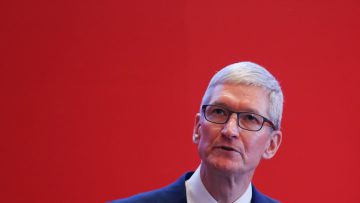The ongoing subscriber exodus from traditional paid-TV packages is picking up steam, with a record number of Americans now cutting the cord and going all-in on TV delivered over broadband. That’s not exactly a surprising reality, but what might surprise you is how extreme things have gotten. The trend looks especially ominous for traditional pay-TV providers, given that new data shows the third quarter saw the most subscribers ever in a three-month period (more than 1 million) give up their cable and satellite TV packages. Said another way, last quarter was paid-TV’s worst quarter on record.
That’s according to data from research firm MoffettNathanson, which found that AT&T, Comcast, Charter and Dish alone lost a combined 887,000 subscribers during the quarter. Losses at AT&T and Dish were the worst. Dish bled 367,000 customers, the most it’s ever lost during a single quarter, while AT&T lost almost that much — 359,000, blowing way past analyst estimates that only 245,000 subscribers would be lost.
For a bit of context behind those numbers, about 90 million (or 75 percent) of the 120 million homes or so with TV in the US still pay for a traditional TV package, according to Nielsen. And more than 80 percent of those customers subscribe to an offering from either AT&T, Dish, Charter or Comcast.
Market research firm eMarketer has already increased its estimate twice this year for how much the cord-cutting trend will grow in 2018 (it now stands at 30 percent). Cost would seem to be partly to blame. We’ve reported in recent days on data from consumer research firm Leichtman Research Group, Inc., which found that the average cost that households pay each month for cable has gone up to $107, which would be almost $1,300 a year.
That’s up 1 percent from last year, which the firm says is partly the result of an increase in fees related to things like regional sports licensing. If you go back to 2010 though, today’s average cable bill is up more than 50 percent. The LRG data also shows that around 78 percent of US households say they still subscribe to paid TV packages, down from 86 percent five years earlier.
An Axios report about this trend notes that many pay-TV providers are hoping to offset losses with gains in subscribers to digital TV alternatives like AT&T’s DirecTV NOW. “But those companies haven’t been able to come close to closing the gap, in part because of so much competition from other digital live TV alternatives, like Google’s YouTube TV, Sony’s PlayStation Vue and Fubo TV, as well as non-live TV alternatives with original programming, like Amazon and Netflix.” For now, about the only thing that’s certain, it seems, is people want to pay less to watch TV, and they’re increasingly turning to non-traditional channels (no pun intended) to fill that need.








